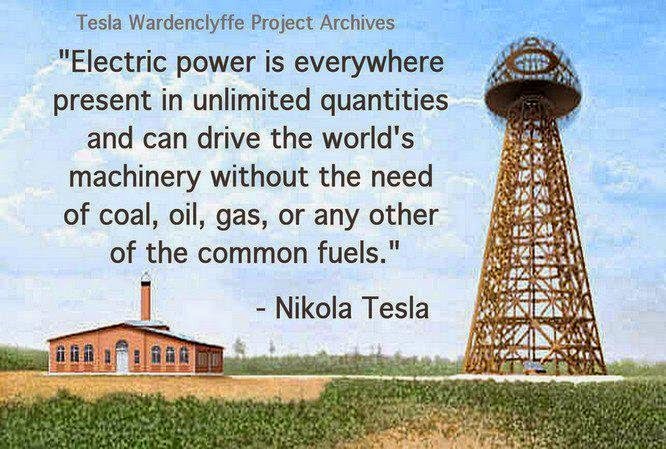California Ponders Changes to Fuel Rules as Tesla Cries Fou

published Jul 7th 2016, 4:59 pm, by John Lippert
(Bloomberg) —
California’s effort to promote non-polluting automobiles is being thrown off kilter by a company that makes electric cars.
The rapid growth of Tesla Motors Inc. and the increasing range of other electric vehicles have the state contemplating new requirements that anger both Tesla and competitors like Honda Motor Co. They say California is changing the rules in the middle of the game, and punishing success.
California has the authority to set pollution rules that are more stringent than U.S. standards, and it requires automakers to sell electric or other non-polluting vehicles in proportion to their market share in the state. Automakers earn credits to reach those goals. Companies that exceed the standards, like Tesla, can sell their extra credits to Honda and others that don’t.
California’s Air Resources Board has projected 15.4 percent market share for zero-emission vehicles, or ZEVs, by 2025. But because so many credits have flooded the system, automakers may now be able to fulfill their requirements with as little as 6 percent of their fleets consisting of electric or fuel-cell vehicles, said Dan Sperling, a professor of civil engineering and environmental science at the University of California at Davis. To bring those figures back in line, the state may increase its ZEV requirement, said Sperling, who serves on the board.
“If anything, the inclination here is to make the mandate tougher,’’ he said.
‘Bizarre’ Idea
The prospect of such a move is angering automakers, whether they sold credits to other companies or used them for their own zero-emission compliance.
“It’s a feature of the regulation that you’re required to produce fewer cars if you invest more in technology,” said Robert Bienenfeld, assistant vice president for U.S. environmental strategy at Honda. “It’s bizarre to say we need to make the regulation more stringent because it’s working.”
The potential oversupply comes as federal and California regulators begin a midterm review of their plan to boost U.S. fuel economy 54 percent to a projected 54.5 miles (88 kilometers) per gallon by 2025, and cut tailpipe carbon dioxide emissions 35 percent. President Barack Obama agreed to the review as he cajoled automakers to endorse the targets in 2011.
“The industry asked for the midterm so we can lower the standard if necessary,’’ said ARB Chairman Mary Nichols, referring to the federal fuel economy and greenhouse gas rules. “We said ‘Fine, as long as there is also the possibility it can go higher.’”
California will issue an evaluation of how the ZEV mandate is working out in the fourth quarter of 2016. A technical review of the federal standards is coming soon.
Possible Backlash
Nichols said she wants an all-ZEV fleet as soon as possible. She said she hasn’t decided how to respond to the oversupply of credits. Some analysts say changing the rules now might spark a backlash.
“If automakers are hitting the targets and complying with the law, it’s politically untenable for the ARB to change the measuring stick,” said Eric Noble, president of CarLab, an automotive-consulting firm.
The resources board made its 15.4 percent estimate before Tesla announced plans for 500,000 electric vehicles, or EVs, a year by 2018. At the time of the estimate, plug-in hybrids often traveled just 20 miles on batteries. Today, the new Chevrolet Volt travels 53 miles before a gasoline-burning engine starts up to generate more electricity.
The board could strengthen the mandate by simply raising the number of credits and sales automakers need to comply. Or, conscious that the requirements could be seen as a “Tesla subsidy program,’’ regulators could limit the credits that any individual automaker can sell, Sperling said.
Diarmuid O’Connell, Tesla’s vice president for business development, said he supports higher emission targets. But he rejects the idea of capping credit trades, which he calls “an extremely stupid idea: You’d be punishing people who are doing the most to put EVs on the road.”
Tesla sold 50,658 electric vehicles worldwide in 2015, a 10-fold increase in three years and more than any company other than Nissan Motor Co. Tesla also sold $168.7 million in ZEV and other regulatory credits that year.
Since 1990, when the zero-emission mandate started, California has been alone among world regulators in requiring specific technologies instead of just setting pollution limits. Along with nine other states that have signed on to California’s program, it’s having a big impact, said Alan Baum, an independent auto analyst in West Bloomfield, Michigan.
VW Boost
By 2018, the number of hybrid, plug-in hybrid and battery-only models sold in the U.S. — such as Chevy Bolt, Ford Fusion Hybrid and Toyota Prius — will jump to 92 from 58 this year, Baum said. Cheap gasoline drove the sale of such models and fuel-cell cars down 11.3 percent last year to 509,000. By 2018, they should rebound to 854,000, Baum estimated.
California’s EV industry got another boost when Volkswagen AG agreed last week to spend more than $1 billion in the state as part of a settlement with regulators on its diesel cheating scandal. The state will use the cash to build electric and hydrogen fueling stations as well as other clean-air projects.
Better technology is also helping. From 2009 to 2020, the cost of battery packs for Tesla and other electric vehicles will drop 80 percent to $250 per kilowatt hour, said Sam Jaffe, a Cairn Energy Research analyst in Denver. Tesla’s $35,000 Model 3, due out next year, is changing attitudes; it generated 373,000 reservations accompanied by $1,000 deposits.
“It proves that car companies doing a really good job on EVs can sell them,’’ Jaffe said.
(Updates with ZEV evaluation in the 10th paragraph.)
To contact the reporter on this story: John Lippert in Chicago at jlippert@bloomberg.net To contact the editors responsible for this story: Jamie Butters at jbutters@bloomberg.net Mark Schoifet, John Lear
copyright
© 2016 Bloomberg L.P







No Comment